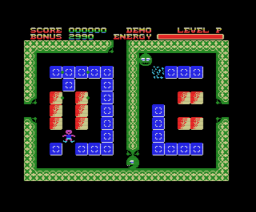- Rating
- (2 votes)
- RAM
- 64kB
- Sound
- PSG
- Kind
- Game
- Input Devices Supported
- Keyboard, Joystick
- Language
- English
- Genre
- Puzzle
- Licence
- Commercial
- Note
- Mentioned in
-
- MSX News 3 on page 8 (review)
- Added on
- 17-06-2006
- Last updated on
- 14-12-2018


